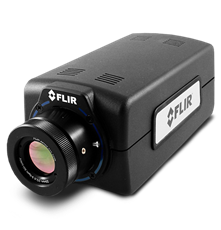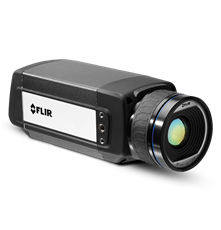Non-Destructive Testing (NDT) / Materials Testing
FLIR cameras with Lock-In, Transient, and Pulse capability can perform advanced inspections such as Non-Destructive Testing (NDT) or stress mapping, resolving temperature differences as low as 1 mK. NDT is widely used to evaluate the properties of a material, component, or system without causing damage. IR cameras can detect internal defects through target excitation and the observation of thermal differences on a target's surface. Thermal imaging is a valuable tool for detecting defects and points of failure in composites, solar cells, bridges, and electronics. It is also a great tool for thermal mapping of stress when performing materials testing.

Composite Inspection
Thermal non-destructive testing can detect internal defects through target excitation and the observation of thermal differences on a target surface. It is a valuable tool for detecting voids, delaminations, and water inclusion in composites.


Solar Cell Inspection
Solar Cell Inspection may have electrical shunt defects. When the cell is energized, these shunts can be detected easily with Lock-In thermography. Lock-In photoluminescence testing can be done with near-infrared cameras.


Bridge Deck Inspection
Bridge Deck Inspection is a Non destructive multi sensor technique that identifies areas of deterioration and calculates a quantitative index to determine the degree of deterioration for each span/lane of the bridge. The FLIR infrared camera provides a more accurate evaluation of the condition of concrete bridge decks. It also helps to better predict the progression of deterioration and assess the need for rehabilitation. By enhancing the early detection of deterioration on the bridge’s surface, transportation agencies will be able to apply proactive maintenance actions to extend the remaining life of the deck with lower life-cycle costs.
